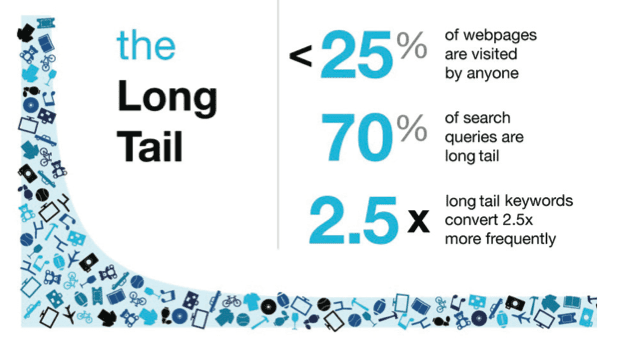Ecommerce SEO Tips: 4 More Ways to Boost Your Online Presence

Think your online store doesn’t need SEO? Think again.
Did you know that 63% of all searches begin on Google? Search engines drive more traffic than social media does, by a margin of 300:1, with 93% of users clicking on the first three search results and about 80% of users completely ignoring PPC ads at the top. With these statistics in mind, it’s obvious that you’ll want to have a game plan for marketing your online store in the organic search results.
With a few simple steps, you can easily optimize your online store to improve search engine saturation and relevancy in the eyes of the Google beast. Getting there isn’t as difficult as you might suspect. Just use these ecommerce SEO tips to get off to a running start.
We’ve recently issued a guide on How to Improve Ecommerce SEO. Here are several more tips that build upon this guide to help you take your online store’s marketing plan to the next level.
Optimize Your Product Descriptions
A commonly overlooked element of your SEO is right before your very eyes: Your product descriptions. How you write these, the keywords and titles that you use, and even everything down the bullet points, are all scanned by Google. While your product descriptions should be optimized for SEO, it’s more important to make sure that they adequately describe the products that you’re offering, including added information like sizing charts or comparisons, available options and more.
When your product descriptions are properly optimized, it will be easier for people searching for the products that you’re offering to find them.
Along the way, make sure you integrate these proven SEO optimization tactics:
- Make sure your descriptions are at least 300 words.
- Identify the search terms (keywords) people are using to find your products.
- Use the primary keyword once in the title and twice in the body of the product description.
- Check spelling and grammar for clarity, style and prose.
- Always write unique product descriptions or Google will ignore duplicate content.
For more tips on how to write and optimize your product descriptions, read our related guide: How to Write Better Product Descriptions.
Make Images SEO-Friendly
Your images are also another powerful SEO tool and are commonly ignored as such by many retailers. But the reality is that people searching for products are also conducting image searches, and Google scores your pages for quality based upon several factors, including optimized image use.
Depending on what platform you are using to sell online (e.g. WordPress, Shopify, 3dcart, Bigcommerce, etc.), there will be different ways of accessing the image descriptions of your products.
For this example, we will use a WordPress screenshot, but it works about the same on most other platforms.

- You’ll want to make sure you rename the image file to include the actual name of the product and any keywords you’re trying to rank for.
- Next, make sure you add a detail description to each image that offers insight for Google to index.
- Add a title to each image as well that includes the primary keywords.
- Finally, consider adding captions to the image, which add more content and help it rank better.
For even more optimization tips, make sure you read our related guide: 7 Tips for Optimizing Your Online Store for SEO.
Add Product Videos
Videos are one of the most powerful marketing weapons ever created. Need some convincing? Take a look at these statistics on product videos and why they increase conversions:
- Videos have a 16.85% conversion rate as compared to standard banners (2.14%) and mobile (1.62%). (eMarketer)
- 58% of consumers trust brands with videos more. (Retail Touch Point)
- 59% of consumers will watch a video that is part of your website content. (Reach Engine)
- 96% of shoppers rely on product videos when making a buying decision. (Animoto)
- 6% of shoppers rely on visuals when making a buying decision. (VoucherCloud)
- Consumers who watch a product video are 1.7 times likelier to convert. (Invodo)
- 12% of consumers will watch a video on an ecommerce site. (MediaPost)
- 57% of shoppers will return less and buy in confidence when product videos are offered. (MediaPost)
After learning all of these statistics on video conversion rates, you probably are wondering how you can use videos to get more sales. Some keynotes include:
- Minimize the length to under 30 seconds.
- Make sure you are engaging the viewer during the first 9 seconds.
- Be creative and consider using a professional service to create your video.
- Use models to showcase clothing and products for your shoppers.
- Create instructional videos for shoppers if selling related products.
- Show dimensions of products in videos to get shoppers a better idea.
- Explain complicated features of technical products in videos.
If you need even more reasons to start adding videos to your online store, look at our related guide: 7 Reasons to Consider Adding Ecommerce Product Videos.
Integrate Long Tail Keywords
Our last tip is all about keywords. Now in most cases, people don’t search using one or two-word search terms. Rather, most people search like they are asking a question. Keywords that consist of three or more phrases are called “long tail” keywords. They’re the most popular but are also the easiest for you to gain natural search engine rankings from.
This means that you’re going to want to optimize your keyword research on products to these longer terms. What’s more, you’re also going to want to integrate them into your product descriptions, image optimization and video marketing strategies, too, to get the most saturation for your efforts.

Aside from helping your products more easily rank in the search results, long tail keywords offer additional benefits. They’re 250% more likely to result in a conversion when properly implemented. This is because users are more apt to make a purchase when they determine that the product they’ve discovered in a search is the solution they’ve been looking for.
Ready to take things to the next level but need more tips? We’ve got you covered in this related guide: How to Be Superman with Ecommerce SEO. Or glean some more tips from this infographic.

Share On:








